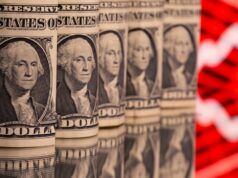BSP can hold fire on rates even as inflation peaks
By Melissa Luz T. Lopez, Senior Reporter
THE Bangko Sentral ng Pilipinas (BSP) has sufficient leeway to hold fire on policy rates this month even with higher inflation in August, a bank analyst said.
Chidu Narayanan, Asia economist of Standard Chartered Bank, expects prices of widely-used goods to have surged to 6% last month, a fresh nine-year high following a 5.7% rise in July and the 2.6% logged in August 2017.
If realized, this would be the highest inflation reading since a 6.6% rise in March 2009. The 6% estimate is also slightly higher than a 5.9% forecast from the Department of Finance, the Bangko Sentral ng Pilipinas (BSP) and a BusinessWorld poll of 14 economists.
The Philippine Statistics Authority will release official inflation data tomorrow.
Mr. Narayanan said the fresh spike in prices comes on the back of higher rice and fish prices which account for 2.8 percentage points (ppt) of inflation, followed by housing and utility costs which add 1.3 ppt.
However, this should be the peak level for the year.
“We expect inflation to peak in August — we forecast a moderation in inflation in Q4 and 2019,” Mr. Narayanan said in an e-mail interview, adding that this will leave room for the BSP to keep policy settings steady.
“The central bank is likely to maintain its hawkish rhetoric at its September meeting, but not hike policy rates following its cumulative 100 bps of hikes at its past three meetings.”
Prices of widely-used goods and services have surged by an average of 4.5% as of end-July, well above the original 2-4% target. The central bank has abandoned this goal as latest estimates show a full-year inflation rate of 4.9%, with the focus now towards guiding price movements back to below 4% by 2019.
In response, the BSP raised interest rates by 50 basis points (bp) during the Aug. 9 meeting in a bid to rein in inflation expectations, which plays a huge role on actual price movements.
The bank analyst added that the central bank can stand pat on current benchmark rates — which range between 3.5 and 4.5% — until year’s end.
“With inflation likely to moderate in Q4, we see no further rate hikes from the central bank. Medium-term risks to inflation lie to the upside, in our view, on higher oil prices, a weaker currency or higher-than-expected infrastructure investment,” Mr. Narayanan added.
The BSP will reassess its policy stance on Sept. 27, its sixth review this year.
BSP Governor Nestor A. Espenilla, Jr. said the bank has “kept the door open” for future rate adjustments in a bid to ease price pressures, with the view that the economy can still absorb further tightening moves while keeping growth momentum intact.
In an interview with Fitch Ratings, Finance Secretary Carlos G. Dominguez III said that current interest rates are “not yet growth-threatening” despite the three successive hikes introduced by the BSP.
Meanwhile, Nomura analysts said rising inflation still merits a 50bp tightening of rates between September and December to douse price pressures. This comes at a time of sustained rapid credit growth, as bank lending accelerated to 18.7% in July, up from the 17.7% pace in June when accounting for reverse repurchase agreements.
“By sector, the acceleration was led by real estate & construction and manufacturing, which should continue to be viewed by BSP as lending into productive sectors,” economists Euben Paracuelles and Charnon Boonnuch said in a report on Monday.
Meanwhile, 2018 economic growth is expected to come in at 6.5%, suggesting 6.8% growth in the second half. This is below the government’s 7-8% growth target.



